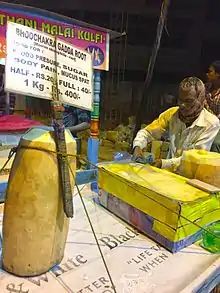Maerua oblongifolia
Maerua oblongifolia (syn. Maerua arenaria, Niebhuria arenaria) is a low woody bushy under-shrub sometimes scandent to 2–3 meters high, with a thick root stock and thick leaves, and strongly scented flowers, occurring in India, Pakistan, Africa and Saudi Arabia. In Telugu this plant is called by name Bhoochakra gadda (In Telangana) and Bhoochakra dumpa (In Andhra). In Tamil this plant is called by name Poomicchakkarai Kizhangu (பூமிச் சர்க்கரைக் கிழங்கு). This is a tuber that naturally grows in areas closer to fountains, especially in hills. Tribes and others collect the tubers, which are sold as a quick street food, in many Indian cities and towns.
.jpg.webp)
| Maerua oblongifolia | |
|---|---|
| Scientific classification | |
| Kingdom: | Plantae |
| Clade: | Tracheophytes |
| Clade: | Angiosperms |
| Clade: | Eudicots |
| Clade: | Rosids |
| Order: | Brassicales |
| Family: | Capparaceae |
| Genus: | Maerua |
| Species: | M. oblongifolia |
| Binomial name | |
| Maerua oblongifolia Forssk. (A.Rich.) | |

The root of the plant resembles licorice in appearance and taste and said to possess alternative, tonic and medicinal properties.[1] The root of this plant, which tastes like coconut pulp, is edible and is eaten with sugar. The tuber is medicinal, and is used in Indian traditional medicine such as Siddha medicine, and is also eaten raw to quench thirst. Traditionally, the fleshy roots of this plant are used as alternative tonic and stimulant. The plant is also used for treatment of snake bites and scorpion stings.[2]
References
- Encyclopaedia of world medicinal plants, Volume 1 - By T. Pullaiah
- K.R.Kirthikar, P.D Basu, "Indian Medicinal Plants", The Indian Press, Allahabad, p. 101, (1918)